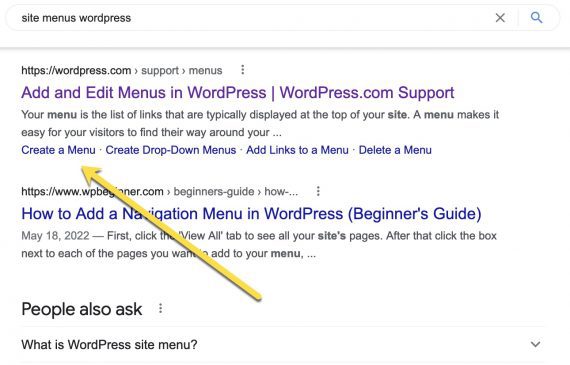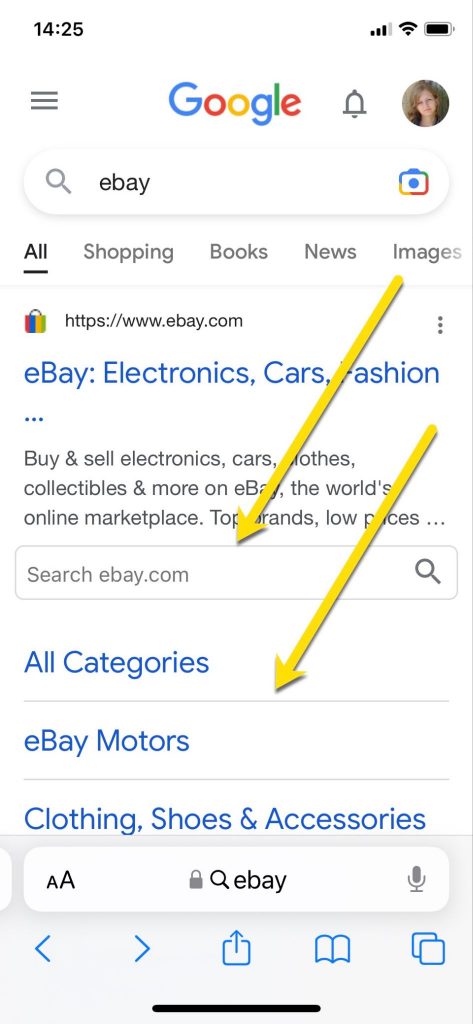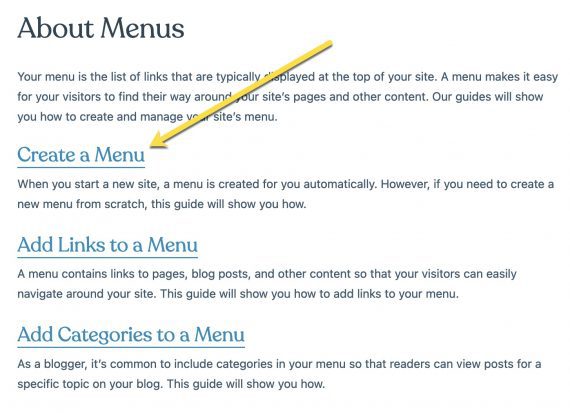Organic sitelinks appear beneath a listing in search results. Google provides no clear guidelines on optimizing for sitelinks, making them unpredictable.
Here’s what we know and suspect.
Organic Sitelinks
Organic sitelinks appear in two forms:
- Branded.
- “Mini” (a single line).
Branded sitelinks show for brand-name search queries and are always at the top. Google inserts branded sitelinks in mostly high authority sites for known “entities,” high-volume queries Google knows as brands.
Sometimes branded sitelinks include a box to search the site right from Google. Google’s tutorial addresses how to use structured data to increase the chances of a sitelink search box.
In most cases, however, branded sitelinks are from the main navigation, such as this example for an “ebay” query.
Mini sitelinks mostly show up in the top 10 organic results. Mini sitelinks are contextual — i.e., based on the search query.
Optimizing for Mini Sitelinks
I know of no way to optimize for branded sitelinks other than changing a site’s primary navigation. (Paid search advertisers have much better control.) But there are few on-page tactics to generate mini sitelinks, which appear in two forms.
- Jump-to sitelinks go directly to a section of the same page ranking for the search query.
- Cross-site sitelinks go to other pages of the site related to the query.
Jump-to sitelinks are based on inserting so-called “HTML anchor links” on a page and then linking to them. Clicking a link takes the visitor to that anchor without opening a new page.
WPBeginner explains how WordPress users can easily create a clickable table of contents via anchor texts in H2 or H3 subheadings. Here’s a screenshot below of a page that generates organic mini sitelinks using that method.
Consider updating a page if it includes a table of contents but fails to generate mini sitelinks on Google’s search results. In my experience, Google sometimes drops sitelinks if the content is a couple of years old.
Cross-site sitelinks show up when the underlying page links internally to others that elaborate on the topic. This is useful for highly-focused content.
Consider, too, linking prominently from one page to subheadings on another. Here’s an example of cross-site sitelinks on Google search results.

Cross-site sitelinks show up when the underlying page links internally to others that elaborate on the topic, such as this example of adding menus in WordPress.
And here’s the page that populates them. As you can see, Google often drops some links and re-orders others.
Cross-site sitelinks are harder to earn because they (apparently) rely on page authority, i.e., its backlink profile. Monitor your sitelinks using SE Ranking’s “Sitelinks” filter within its position monitoring tool. Save the filter for easier subsequent access.
How to Remove a Sitelink
A common reason to remove a sitelink is to replace it with another page. Unfortunately, Google provides few, if any, removal options.
- Search Console no longer offers control over sitelinks. It used to.
- Google recommends using a noindex meta tag to eliminate a sitelink. That recommendation, however, is incredibly damaging. It will remove the entire page from Google’s index, preventing it from ranking for any query.
- Finally, this meta tag is still (apparently) supported by Google: <meta name=”google” content=”nositelinkssearchbox”/>. This will remove the sitelinks search box from your search snippet, but I am not sure if it will eliminate a page (from sitelinks). It’s worth a try if you’re desperate.







